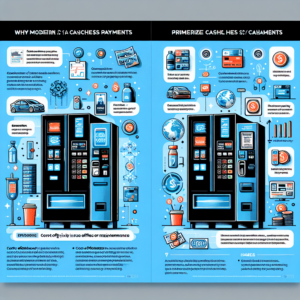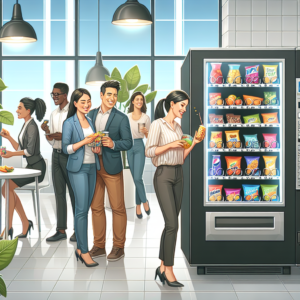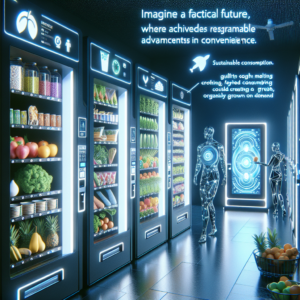Vending Machine Energy Consumption
Understanding the Basics
When you think about vending machines, energy consumption might not be the first thing that pops to mind. But it’s actually a big deal! A lot of folks don’t realize just how much energy these little workhorses use, especially since they’re running 24/7.
Breaking it down, vending machines typically consume energy for lighting, refrigeration, and sometimes even heating, depending on the environment they’re in. The thing is, they’re almost always plugged in. This constant energy draw can lead to hefty electricity bills if you don’t keep an eye on their usage.
From my own experience, I once had a vending machine in an office that was notorious for high energy use. We decided to dig into the details, and wow, did we have our eyes opened! It turns out, monitoring energy usage is a crucial first step in managing costs.
Factors Influencing Energy Use
Many elements can influence how much energy a vending machine uses. For instance, ambient temperature has a massive impact. Machines positioned in hotter environments tend to consume more energy as they work harder to keep items cool.
Another factor to consider is the age and technology of the machine. Older models are often less efficient than newer ones, thanks to advances in energy-saving technology. If you’re still running a machine from the early 2000s, it might be time to think about an upgrade.
Finally, the type of products you’re vending can also play a part. Items that require refrigeration or heating (like sodas or hot drinks) will naturally require more energy to maintain, which can bump up your overall usage and costs.
Evaluating Your Machine’s Consumption
Alright, so how do you go about evaluating your machine’s energy consumption effectively? It’s not as complicated as it sounds. If you have access to an energy monitor, that’s a great place to start. These handy devices can hook up to your machine and give you real-time data on energy use.
If you can’t get your hands on one of those, don’t worry. Many newer types of vending machines come with built-in systems that track energy use and allow you to check the figures at the touch of a button.
If nothing else, keeping an eye on your electricity bills year-on-year can help you spot trends in usage over time. Cross-reference those with any changes in business operation, and you might spot areas where savings can be made.
Energy-Efficient Vending Solutions
Implementing Smart Tech
Smart technology is all the rage, and for good reason. Integrating smart tech into your vending operations isn’t just about getting ahead of the curve; it’s about keeping your energy consumption in check too.
For example, sensors can detect the presence of customers and control the lighting and display accordingly. This means no more energy wasted on a full-blast display when no one’s around to see it!
Furthermore, smart thermostats are invaluable for controlling refrigeration settings based on real-time data, making sure everything operates smoothly and cost-effectively.
Maintenance and Upkeep Strategies
Keeping your vending machine well-maintained goes a long way toward ensuring it stays energy efficient. Regular maintenance includes checking that seals on refrigerated units are intact, ensuring parts are lubricated, and generally ensuring all systems are functioning as smoothly as possible.
From what I’ve seen, simple maintenance checks can help you catch potential issues that might cause a spike in your energy bill. For example, a routine inspection could reveal that a light bulb needs replacing or a seal needs tightening, both of which can have a surprising impact on energy use.
Be proactive rather than reactive with your maintenance. Setting up a regular schedule and sticking to it will help keep everything running in tip-top shape, ensuring energy efficiency is maintained year-round.
Switching to Energy-Efficient Models
If your current vending machine is an old model, it might be time for an upgrade. Energy-efficient models do cost more upfront, but they pay for themselves through significant savings on electricity over time.
I remember a colleague who was hesitant to swap out his older machines, worrying about the cost. But eventually, he took the plunge and switched to new energy-efficient models. A few months later, he was singing a different tune, bragging about his reduced energy bills.
So, don’t be afraid to invest in the future and replace old machines with modern, energy-efficient ones. Apart from the cost savings, it’ll also make your business operations more sustainable, scoring you some green points with your clientele.
Cost-Effective Vending Operations
Optimizing Product Selection
Product selection may not sound like it connects to energy savings but hear me out. Stocking your vending machine with the right products can influence energy costs indirectly.
For instance, vending a mix of items that have little to no refrigeration requirements alongside refrigerated products spreads the energy cost over a wider range of goods, reducing the per-unit energy cost.
Another nifty hack is timing your refills strategically, ensuring the machine isn’t only saving energy but that it’s stocked in a way that optimizes the cooling power it has to use per item displayed.
Strategic Location and its Impact
Location, location, location — it’s not just a mantra for real estate agents! Where you place your vending machine can significantly affect its energy consumption.
If your vending machine is in a sunlit or warm area, like near a window or a frequently opened door, it has to work extra hard to keep cool, driving up energy use. Ideally, find a shaded, cool spot, away from direct sunlight and heat sources.
I’ve worked with businesses who moved their machines just a few feet to a cooler location and saw a notable reduction in their energy bills. Sometimes small changes make big differences!
Monitoring Financials Vigilantly
Keep an eye on your costs, and understanding the numbers behind your vending operations can really pay off. Dive into the details and know where your money is going in terms of energy use.
Mistakes like ignoring small fluctuations in costs can add up. Regularly reviewing your costs ensures you’re not wasting money in unnoticed areas and that your machine operates efficiently.
Share these details with your team. Educating them about the energy costs involved with operating and maintaining the vending machines creates awareness and often leads to more conscious energy-saving actions.
Innovative Energy Saving Technologies
Exploring Eco-Friendly Options
Eco-friendly technology isn’t just about being trendy; it’s about efficiency and sustainability. Vending machines that incorporate eco-friendly technologies do wonders for keeping energy costs low while doing good for the environment.
Modern energy-saving vending machines utilize components like LED lighting, which are miles ahead of traditional lighting in terms of efficiency and lifespan. With LED lights, you get excellent illumination without the heavy energy bill.
I once took a look at one case where replacing traditional light bulbs with LEDs yielded significant energy savings, and it’s something I’d recommend considering for your vending operations too.
Utilizing Solar Energy
Solar power is making waves in many industries, including vending. While not applicable everywhere, employing solar power where feasible can bring your operational costs down drastically.
Think solar panels could be a bit of an investment? You might be surprised by the long-term savings. I’ve seen businesses successfully use solar energy to power non-essential parts of their vending operations, like lighting, helping to cut energy demand from the grid.
Even if going fully solar isn’t an option for you, integrating just a hint of solar energy into your energy strategy can still provide excellent savings over time.
Embracing Automation for Efficiency
Automation in vending machines? Absolutely! Imagine the machine adjusting its own temperature settings in response to real-time data or automatically powering down when no one’s around.
Automation is becoming increasingly popular in the vending world, and its purpose is to optimize operations, save energy, and cut costs. It provides a way to ensure the machine operates at its best without constant human oversight.
Putting it in practice, I consulted with a company that implemented automated features, and the change was dramatic. It not only minimized energy use but improved the overall efficiency of their vending operations, meaning it’s well worth considering.
FAQ
-
What are the primary energy consumption factors for vending machines?
Key factors include ambient temperature, type of products being vended, and the age and technological sophistication of the machine.
-
How can smart technology improve vending machine efficiency?
Smart technology can control lighting, detect customer presence, adjust refrigeration, and track energy use, reducing unnecessary consumption.
-
What role does product selection play in reducing energy costs?
Choosing a mix of products that require minimal refrigeration can distribute energy costs more evenly, potentially lowering overall energy expenses.
-
Why is embracing eco-friendly tech advantageous for vending operations?
Eco-friendly technology such as LED lighting and solar power can significantly reduce energy bills while promoting sustainable practices.



